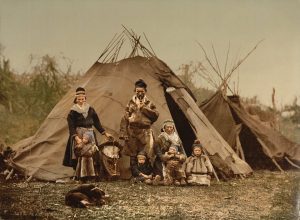Peuples autochtones
Les peuples autochtones sont les descendants de ceux qui ont habité un pays ou une région géographique au moment de l’arrivée de personnes de cultures ou d’origines ethniques différentes. Les nouveaux arrivants devinrent plus tard dominants par la conquête, l’occupation, la colonisation ou d’autres moyens.
Les peuples autochtones ont des liens étroits avec les territoires et les ressources naturelles environnantes, une langue, une culture et des croyances distinctes.
Au moins 370 millions de personnes vivant dans 90 pays à travers le monde sont considérées comme autochtones.
Les peuples autochtones de l’Arctique représentent environ 10% de la population totale (environ 400 000 personnes). Il existe plus de 40 groupes ethniques différents: Saami dans les régions circumpolaires de Finlande, Suède, Norvège et Russie du Nord-Ouest, Nenets, Khanty, Evenk et Tchouktches en Russie, Aleut, Yupik et Inuit (Iñupiat) en Alaska, Inuit (Inuvialuit) au Canada et Inuit (Kalaallit) au Groenland.
Photo: Famille Sámi (vieux photochrome)



 This project (EDU-ARCTIC) has received funding from the European Union’s Horizon 2020 research and innovation programme under grant agreement No 710240. The content of the website is the sole responsibility of the Consortium and it does not represent the opinion of the European Commission, and the Commission is not responsible for any use that might be made of information contained.
This project (EDU-ARCTIC) has received funding from the European Union’s Horizon 2020 research and innovation programme under grant agreement No 710240. The content of the website is the sole responsibility of the Consortium and it does not represent the opinion of the European Commission, and the Commission is not responsible for any use that might be made of information contained.